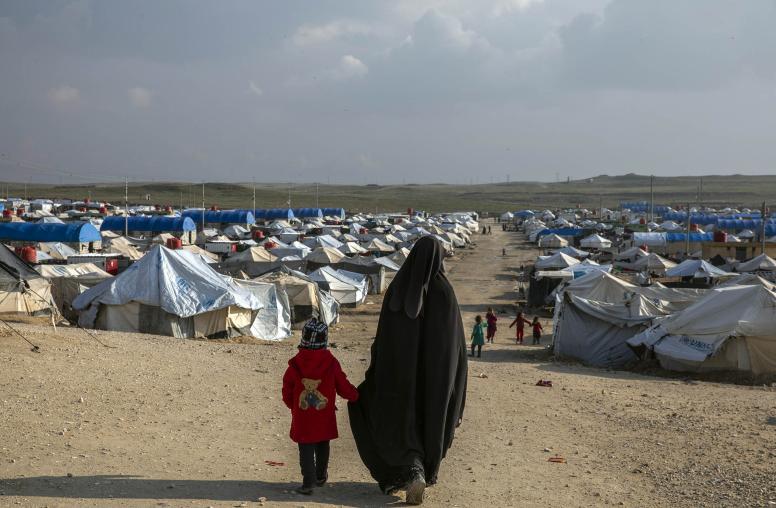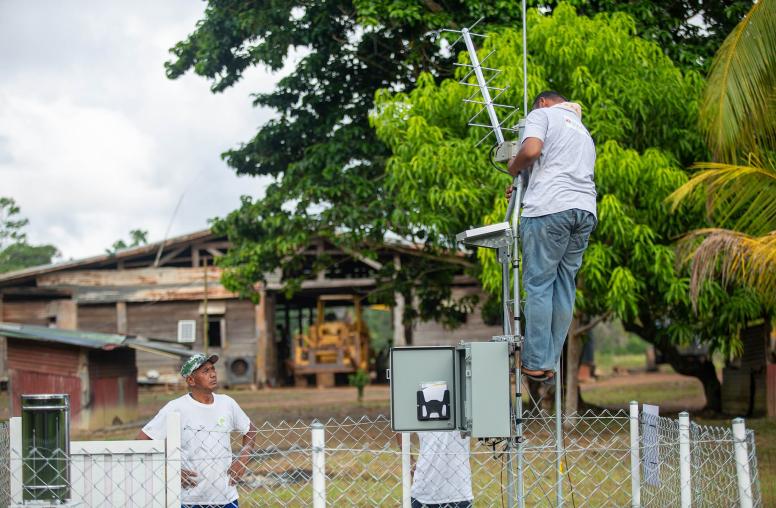U.N. Youth-and-Peace Resolution: The Hard Work Begins
Envoy Says Grassroots Groups Must Push for Impact of Security Council Measure
The United Nations Security Council recently addressed a force quietly shaping the world: a generation of young people that, numbering 1.8 billion between the ages of 10 to 24, is the largest in history, and has enormous potential to build peace amid the violence that so often rocks their world. The council’s resolution on youth, peace and security was the first to deal with the role of young people on these issues. The hard work now is to turn the resolution’s words into reality, H.E. Ahmad Alhendawi, the secretary-general’s first envoy on youth, said this week at the U.S. Institute of Peace.

“How do we make sure that those on the national level, and especially the regional level, support our work?” -- Nigerian youth activist Victoria Ibiwoye
“I wish Resolution 2250 was something you could send to a ministry by FedEx and and there you go, but it doesn’t work that way,” Alhendawi said on a panel of international youth leaders discussing the significance and future of the December 9 resolution. “Someone has to pick it up and push it forward” from the grassroots, he said. At the same time, the way the resolution upends a common view of young people to position them as partners for peace rather than just foreign fighters, victims or perpetrators is poised to “trickle down” to national and local levels of the U.N.’s member states, he said.
The resolution, which recognizes that young people often form the majority in countries affected by armed conflict, has five elements. It calls for:
- Participation by youth in decision-making, including in peace agreements and on issues of countering violent extremism;
- Protection of youth from war crimes;
- Prevention of violence by including youth from diverse backgrounds in violence-prevention activities;
- Partnering with youth to address conditions that lead to violent extremism; and
- Involving youth and considering their special needs in post-conflict plans for disengagement and reintegration of combatants.
“When we talk about investing in youth, we are not doing youth a favor,” said Manal Omar, who heads USIP’s Center for the Middle East and Africa, in opening the June 14 discussion. “It’s a true, sustainable way for us to have strategic change on the ground.”
In even the most remote parts of the world and in the most violent settings, constructive youth groups can always be found, she said. Resolution 2250 made the historic contribution of recognizing those activists and mobilizing their energies for peacebuilding, she said.
The discussion with the special envoy marked the second forum in as many days at USIP focused on youth. The previous day, USIP hosted His Holiness The Dalai Lama for an event that followed up on his meeting in May at his residence in Dharamsala, India, with a group of 28 youth leaders from countries facing warfare or violent extremism. The young civic leaders run organizations that work for nonviolent social change. The Dalai Lama noted that they had faced “desperate moments” of violence and loss, but responded by working for peace in their communities.
Still, Omar said, the Interagency Working Group on Youth and Peacebuilding, the co-host of the June 14 U.N. event, recognizes the challenges faced by non-violent movements, the difficulties of supporting youth on the ground, and the pitfalls of relying on resolutions alone to make change.
Heads of state may simply go back to business as usual, and youth inadvertently can become tools for political agendas. The working group is considering ways to make the resolution effective so it’s “not just ink on paper,” Omar said. That means drawing lessons from experience with previous U.N. resolutions, such as 1325 on women, peace and security.
The resolution must be “a springboard for programs that truly make a difference, where we are providing an enabling environment for youth leadership in conflict zones,” Omar said. “Our job is to always pass the microphone.”
Youth Leaders' Views
Saba Ismail, the executive director of Aware Girls, in Pakistan, described her efforts as a peace activist who, at 15 years of age, co-founded an organization that works with youth vulnerable to recruitment by militant groups.
In the community where she operates, polling had shown 82 percent of youth eager to die as a martyr for Islam, half viewing violence as a legitimate tool for religious or political ends, and 52 percent rejecting equal rights for worship by other religions. After some years of her group’s trainings and dialogues, which she estimated had reached 2,000 people, 90 percent supported equal religious rights.
The Security Council’s recognition of that kind of work by young people offers encouragement, Ismail said. The resolution is also a tool to help hold government accountable, and for youth to demand a place at the policy level of peacebuilding, she said.
“It doesn’t mean it’s a top-bottom approach, because this resolution was the dream of young people like me” who worked for it, she said.
Victoria Ibiwoye, the founder of One African Child Foundation in Nigeria, teaches social skills and conflict resolution to children from low-income communities where recruitment by violent extremists is a significant risk. Ibiwoye, a fellow with USIP’s Generation Change program, said her organization has succeeded in getting young people who have passed through her program to spread the peacebuilding messages they have learned.
“Resolution 2250 is an opportunity for us to be well-represented, for our voices to be heard,” she said. But for her, important questions about the resolution’s implementation must still be addressed to generate practical and sustainable effects. “How do we make sure that those on the national level, and especially the regional level, support our work,” she asked.



